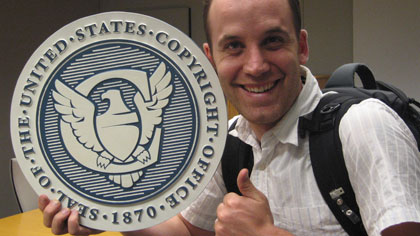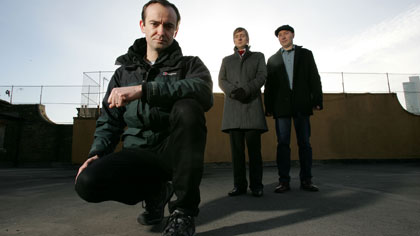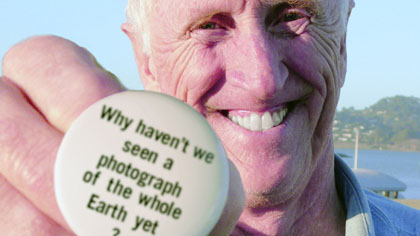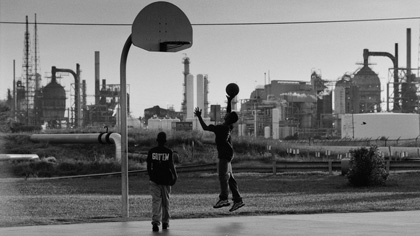Festival report
2. Wear your film with pride

RiP! A Remix Manifesto
Toolis and Dingle at least weren’t wrong about the dullness of self-righteous, hectoring documentaries, particularly when they tell you what you already know. (The problem was that nobody on the panel was naming the films they were talking about.) I’d been looking forward to seeing Brett Gaylor’s RiP! A Remix Manifesto, a treatise on digital mashup culture and the perils of maximalist copyright laws, ever since signing up to be pelted with Facebook messages about its screenings around the world.
Not that Gaylor’s free-culture arguments are wrong, but the film is all too stymied by his belief that he’s right; he bandies the word ‘freedom’ around as wantonly as George W. Bush, and scoops an interview with Marybeth Peters, head of the US Copyright Office, only to cut her out of the film as soon as she’s demonstrated that she’s a techno-fuddy-duddy on the wrong side of the fence. (She’s the past, see, and The Past Tries To Control The Future, a point the film drums away at ad nauseam.) You almost expect to hear that if you’re not with the film-maker then you’re against him. Gaylor also makes a tactical mistake chewing off great chunks of his hero Lawrence Lessig’s Powerpoint lectures on the injustices of modern-day copyright law: Lessig’s orations are some leagues more lucid and level-headed than Gaylor’s breathless peroration. Still, it’s nice that Gaylor got to make pals with his other hero, mashup maestro Girl Talk. And for the uninitiated, the film does give a useful account of recent milestones in remix culture.

Erasing David
I’d also had high hopes of David Bond’s Erasing David since seeing it pitched at the 2008 Britdoc festival; a sort of documentary 39 Steps, it would apparently endeavour to dramatise the extent of our surveillance state by following the director’s attempts to hide himself from the same. The trouble, of course, was that the film didn’t actually have access to the tools of the state (I’ve seen the Bourne movies; I know what we’ve paid for), so the hide-and-seek seemed jarringly DIY. Various concerned talking heads were interspersed with beside-the-point musings on whether David’s flight was a sign of paranoia, or immaturity.

Earth Days
Better was Robert Stone’s Earth Days, an extremely (occasionally too) stylish history of the burgeoning environmental movement in the U.S. through the 1950s and ’60s, up until the first Earth Day in 1970. It starts with a damning montage of each American President since Eisenhower warning in turn of the urgent need to rethink the country’s unsustainable development trajectory, then tracks back through its richly illustrated account of joined-up American dissent with testimony from many of the story’s movers and shakers (Steward Brand, Paul Ehrlich, Denis Hayes, Stephanie Mills, Stewart Udall and more). The film screeches to a halt with the election of Ronald Reagan in 1980, and his symbolic removal of Jimmy Carter’s solar-energy panels from the roof of the White House.

Shelter in Place
These days in deepest Bush country – Port Arthur, south Texas – oil and gas refineries now release suspiciously regular, legally sanctioned ‘upsets’ of toxic chemicals into the local environment. No surprise that the people trapped in closest range to these leaks are largely poor and black, nor that the effects of the pollution on this populace has not been scrupulously monitored. Official advice is that they ‘shelter in place’: stay indoors. Photojournalist Zed Nelson’s Shelter in Place never fulminates, but shoots the scene beautifully, gets to know its oppressed characters (there’s a wonderful scene in which one battered old man takes brief heart from the news of Obama’s election) and puts the powerful on the spot, though sadly only in the figurative sense. (Full disclosure: the film’s producer Hannah Patterson is a friend, so I would say that.)
